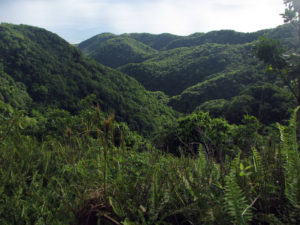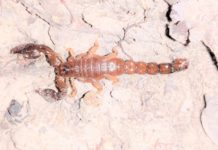Once chytrid was identified on Montserrat in February 2009, a rescue mission brought 50 frogs off the island and into a bio-secure breeding programme held between the partner institutions. By July 2009, chytrid had been confirmed in the last healthy population of Mountain Chickens.

This led to a field trial of the effectiveness of using anti-fungal treatment baths in the wild to reduce the mortality in the remaining population. Now, captive breeding and re-introduction seems to be the best hope for the Mountain Chickens.
The major conservation response in Montserrat is now led by the Darwin-funded project. Through a combination of field study, reintroductions and capacity-building the project aims to ensure that wild mountain chickens can persist in Montserrat.
The project will also benefit Montserrat in a number of ways including restoring a flagship species for Montserrat and the Centre Hills Protected Area. There will also be training opportunities for a Montserratian MSc student studying the ecology of the disease. Key field staff from the Montserrat Department of Environment will also receive broader training from Durrell and ZSL.
As part of a Darwin Initiative funded project awarded to Durrell in 2010, a series of experimental releases were conducted by reintroducing captive bred mountain chickens into the Centre Hills in Montserrat. The aim of these releases was to determine factors affecting variation in mountain chicken mortality when released into a positive Bd environment.
Unfortunately, by 2016 only 1 pair of frogs remain on Montserrat and an urgent rescue mission was undertaken in June/July 2016 to re-locate the last known female on the island nearer to the male in the hope that this last pair will breed.






